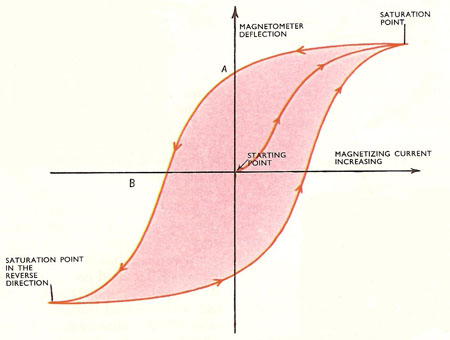For non-analytical areas like the one shown above, print the curve on heavy paper and carefully cut the outline out. Weigh the cut-out with an analytical balance. Compare the weight against a square or rectangular cut-out of known area. The areas will be proportional to the weights you measure.
In actual practice, after cutting out the hysteresis figure, try to estimate the size of the square or rectangle that will produce nearly the same weight as the hysteresis figure. An iterative approach, trimming one edge of the square or rectangle until it closely matches the weight of the hysteresis curve, will provide the quickest results. Carefully measure the height and width dimensions of the square or rectangle of matching weight. The area is the product of the height and width.

